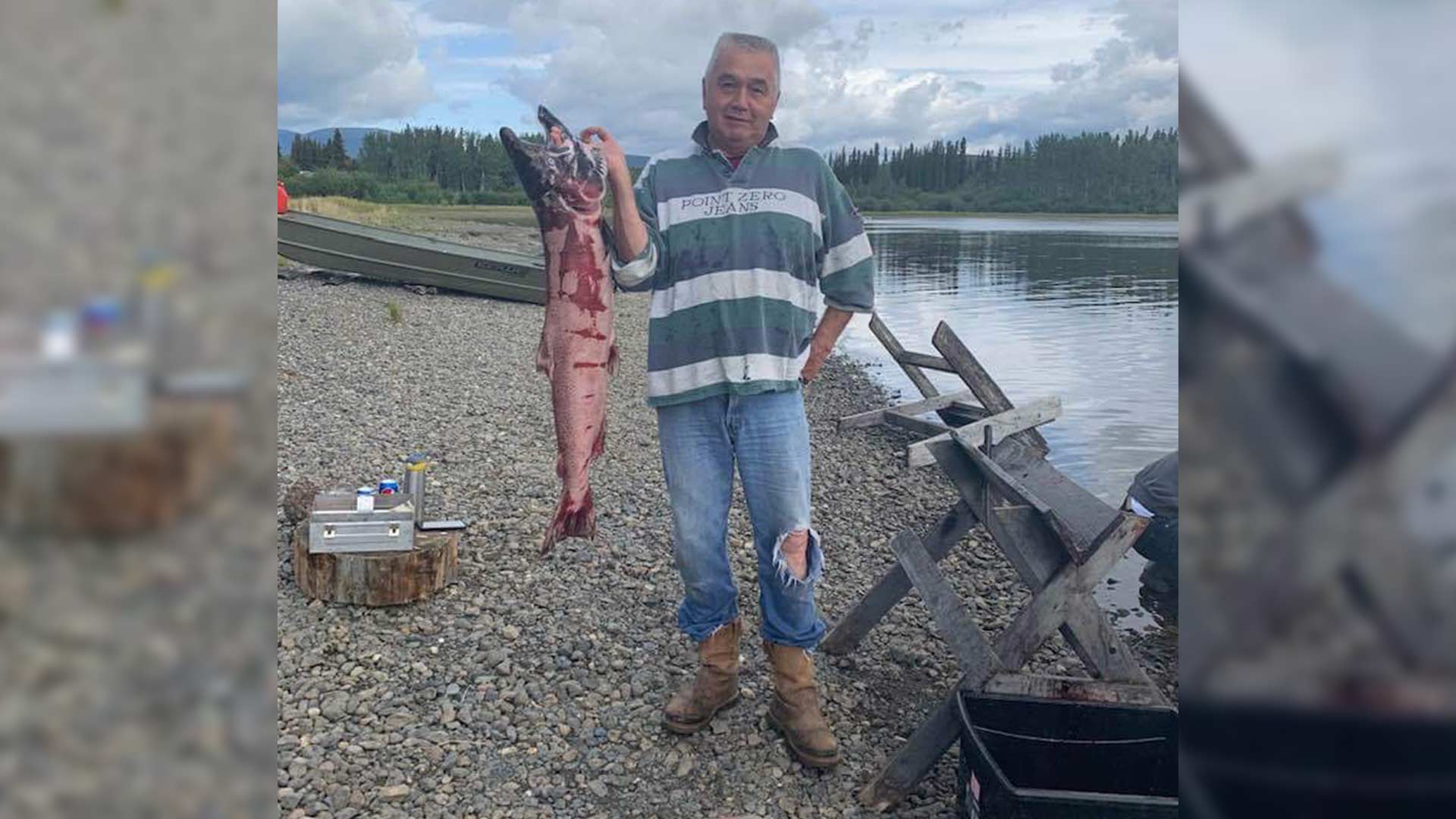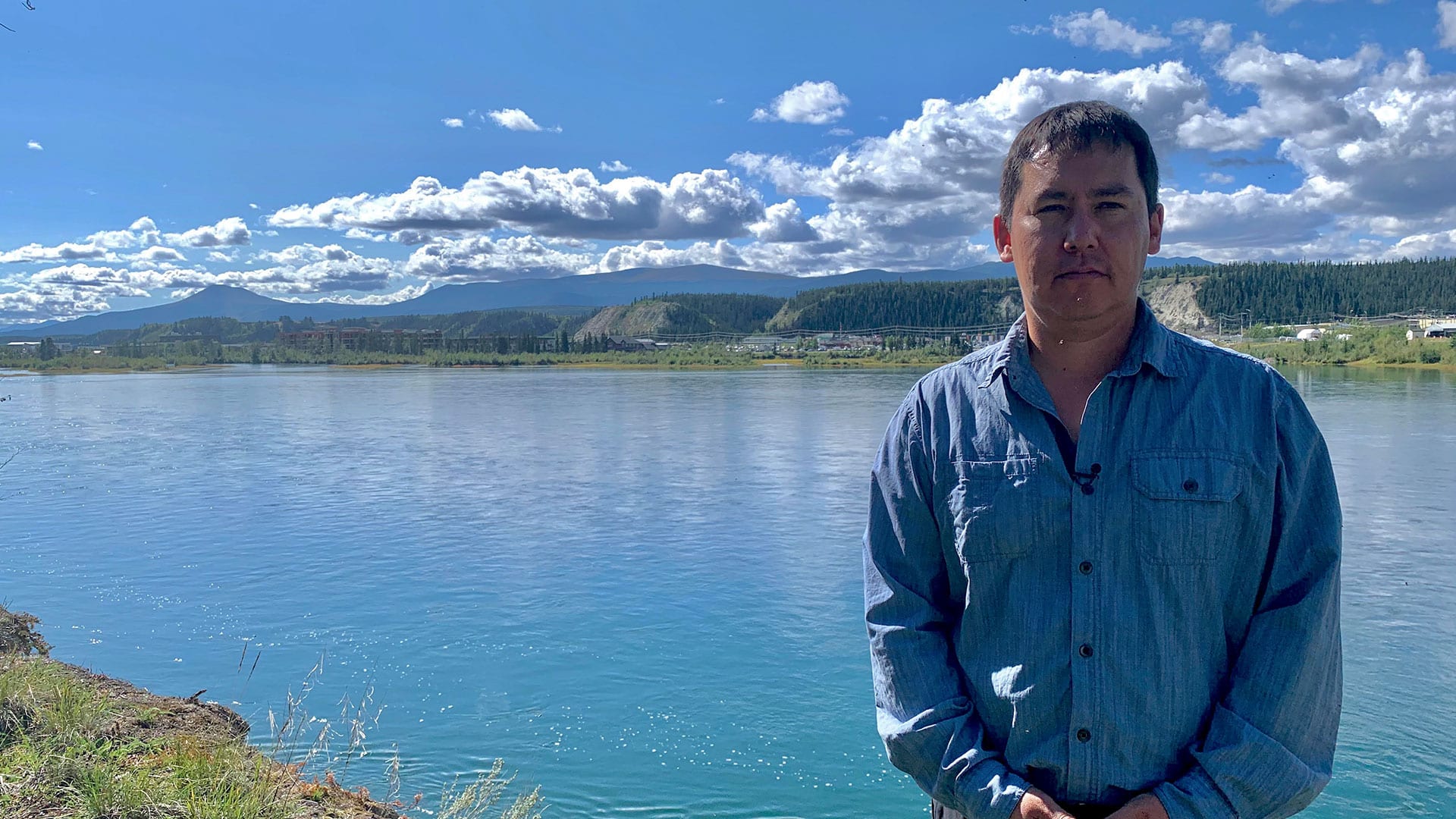Carl Sidney can still remember a time when Chinook salmon were plentiful in the Yukon River.
The former chief of Teslin Tlingit Council grew up eating Chinook salmon, a tasty saltwater fish that migrates up the Yukon river to spawn every summer.
In his youth, Sidney would spend days at a time at his family fish camp, processing heaps of the flavorful salmon and helping his family load them on drying racks so they could be stored for the following year.
It’s a time he remembers fondly.
“There was lots. Put it like that,” he said. “I guess a good way to put it is we could do our fishery for our family of 50.
“When I was a teenager, we could have all our fishery done in a matter of five days – all the fish caught.”
Days spent at the fish camp were about more than just fish; it was a time to celebrate tradition, bring extended family together, and – most importantly – harvest the revered fish, which would provide subsistence and food security during the Yukon’s cold and dreary winters.
Since then, Sidney says things have changed – drastically.
“Nothing. Zero. Today there is (no fish).”
First Nations recommended to stop fishing
This year, the number of chinook expected to pass a sonar project in Alaska near the Yukon border was well below average.
The Yukon Salmon Sub-Committee, an advisory board under the Yukon First Nations final agreements, expected about 55,000 Chinook salmon to be counted at the sonar by the end of the fishing season, which typically falls around the first few weeks of September.
But by mid August, roughly 30,000 fish had entered the territory – 25,000 fish below the annual average.
The low number also affected the territory’s spawning escapement goal with Alaska. This year, between 42,500 to 55,000 chinook were permitted to escape the Alaskan fishery and spawn in the Yukon. This year’s goal was not met.
As a result, the sub-committee recommended that First Nations in the territory stop fishing chinook salmon for the rest of the year.

Sidney, who is vice-chair of the committee, says the recommendation isn’t shocking to most First Nations fishers.
These days, hardly any First Nations people actively fish Chinook in the Yukon.
Last year, Sidney and his family were able to harvest 15 fish. It was the first time they had taken fish from the Yukon River in 20 years.
While it was a happy time for Sidney and his family, he said the happiness was short lived. This year, like most others, was spent away from the river.
“If we keep continuing to go down this road we’re going, it’s just a matter of 15 to 20 years that there isn’t going to be anymore Chinook. We have to start doing something about it.”
“Doomed from the beginning”
Yukon River Chinook live in the Bering Sea near Alaska, but travel thousands of miles to the Yukon to spawn.
Decades ago, the number of chinook in the Bering Sea was about 300,000 fish.
Now, it’s half that number.
In 1961, 9,000 Chinook were harvested in the Yukon for First Nation subsistence fishing.
Last year, that number was 2,700.
Sidney says poor numbers in recent years have become normal.
“Their whole life is just a fight I guess,” he said. “They’re doomed from the beginning.”
Shrinking fish
Chinook salmon are also getting smaller.
Sean Smith is from Kwanlin Dun First Nation in Whitehorse.
Over the years, he’s witnessed the fish shrink in size.
“There’s pictures of me as a little boy with salmon with all the grandmas and grandpas in various camps with salmon that were quite a bit bigger than the ones that we’re getting now.”

In the recent past, Chinook returned to the Yukon River to spawn around six or seven years old and could weigh up to 45 kg (100 lbs).
Now, research shows that Chinook returning to spawn are younger and smaller.
These smaller fish produce fewer eggs and provide much less in terms of food.
As a precaution, Smith stopped fishing Chinook long ago.
His hope is that even if this only helps a handful of females a fighting chance to mature and hopefully, produce more eggs.
“The thing that I’ve chosen to do is to really try to model what we need in terms of an emergency situation, because it’s really an emergency situation,” he said.
Answer might be in Alaska
No one can say for sure what’s happening to these fish.
Climate change, extreme weather and even an influx of harbour seals and beluga whales have all been suggested as possible causes.
However, most First Nations in the Yukon believe commercial fisheries in Alaska overharvested Chinook in the 1980s and 90s.
Sidney said decades ago, Elders in his community warned him that seven and eight-year-old Chinook were disappearing.
Sidney travelled to Alaska to speak with fishery and government officials to voice his concerns, but said ultimately, nothing was done.
“They just continued fishing the big fish and that was their target fish, because they got the most money for them,” he said.
“From there, it just declined and declined, and, here we are now, the fish are getting 20 per cent smaller than they used to be. It’s horrible.”
As a result of low Chinook productivity in the early 2000s, commercial fishing of Chinook in the Yukon River was banned in 2010, though incidental catches are still permitted.
The Alaskan state is now responsible for meeting a border obligation with Canada.
This includes the spawning escapement goal and a Canadian harvest share, which is the number of fish allocated to be caught by First Nations in Canada.
Holly Carroll, area management biologist for the Alaskan Department of Fish and Game, said despite failing to meet this year’s border obligation, the department has a proven track record of meeting its goals – even surpassing it by 20,000 fish between 2014 to 2018.
“A lot of people like to say we failed to meet the goals all those years but it’s not true,” she said. “We actually exceed the goal by 20,000 fish.”
“We found a management strategy where we were able to exceed.”
Last year, the department failed to meet the border obligation by only 500 fish, which she said was unexpected due to relatively high sonar counts in Alaska.
Carroll said in the last two years, the department has noticed significant disparities in the number of fish entering Alaska and those making it to the border.
As to what’s causing the disparity remains a mystery.
“That’s the thing about salmon biology, it’s so complicated,” she said.
“I think these runs are going to come back in sizes that are all over the map, and we keep trying to just do the same thing, and we just keep reacting to that,” she said.
“This year, for Canadians to see that every fish that they harvest reduces that spawning escapement, that’s pretty frustrating for them for sure.”
However, for Carl Sidney, the idea that Alaska has mostly been meeting border obligations is hard to believe.
“If that’s the case, that they had that many fish come across the border, then where is the result of it?” “We never took them. I can’t agree with her,” he said.
“Maybe they let them go a couple times, but, it’s obviously not enough.”
Fishing season is now over and the final number of chinook that made it to the Yukon is being counted.
But for people like Carl Sidney, fishing season already ended years ago.
“We’ve done without salmon for 20 years, you know? What’s another 20 years going to be if we could rebuild the stocks. At least we’ll have something for the future.”










